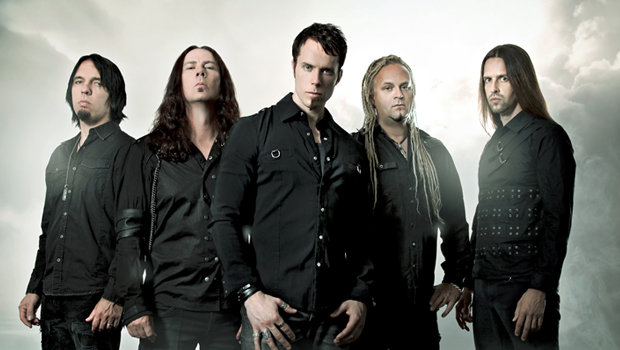
With Kamelot's 10th studio album — and first with new vocalist Tommy Karevik — due out on October 30, we recently caught up with guitarist and chief songwriter Thomas Youngblood to talk gear, Silverthorn, working with Fabio Lione and more.
GUITAR WORLD: Having seen you play with Fabio [Lione, Rhapsody of Fire] last year, I have to ask if the thought of doing an album together ever came up. Was that ever a possibility?
We discussed all possibilities, and he is a great singer and person. I can see doing something with him in the future, maybe a side project, for example.
Tommy has now stepped in as your new full-time vocalist. How many candidates did you seriously consider before giving him the job?
We had hundreds of submissions, but it came down to five top candidates.
Was he involved much in the writing of Silverthorn?
Yes! He wrote all the melodies and most of the lyrics. He was also crucial to writing the story for Silverthorn.
Get The Pick Newsletter
All the latest guitar news, interviews, lessons, reviews, deals and more, direct to your inbox!
Did you tweak your writing process at all to fit his vocal style?
Not at all; his voice already fit into the Kamelot structure. We treaked some of the chords here and there, but that was because Tommy had an idea for a melody change.
You always say the band aims to have each album be better than the last. Where do you think Silverthorn really surpasses Poetry for the Poisoned?
By far! But I never aim to beat the previous album, I only say we commit 100 percent, and whatever is achieved cannot be questioned regarding effort or time. Do your best, and in the end you have no regrets.
Silverthorn is also the band’s third concept album. How did the story start to develop over time? Was the initial idea for it to be a concept album?
We started discussing it about a year ago; it morphed over time. The story was developed by myself, Oliver, Tommy and our producer. Amanda Somerville also wrote the storyline for the limited book we are offering fans.
How did you and Oliver work out the great, intertwining melodies on “Song For Jolee”?
"Song for Jolee" was mainly written by Oliver. We changed barely anything from the original demo he sent me.
What guitars and amps were you using for the recording process?
I use ESP Eclipses and Horizons on this album. For amps, we used Mesa Boogie Rectifiers and Blackstar amps.
Did you use much in the way of effect pedals, or did you opt for using digital effects at all?
My live setup is pretty simple; I run into Boss Noise Suppressor and then a Boss Digital Delay and an Ibanez wah pedal.
How does your live rig differ from what you use in the studio?
The studio is direct into the amp, and we split the signal so that we have a clean signal for re-amping, if need be.
Given the huge success of music videos like “March of Mephisto” and “The Haunting,” do you have anything in mind or already in the works for as far as videos for the new album?
We've already shot two massive videos and plan to do at least four for this album. The first one coming out will be "Sacrimony," which features Elize Ryd and Alissa White-Gluz [The Agonist]. The video came out amazing! Get ready for Silverthorn, people!
Josh Hart is a former web producer and staff writer for Guitar World and Guitar Aficionado magazines (2010–2012). He has since pursued writing fiction under various pseudonyms while exploring the technical underpinnings of journalism, now serving as a senior software engineer for The Seattle Times.
“Even the thought that Clapton might have seen a few seconds of my video feels surreal. But I’m truly honored”: Eric Clapton names Japanese neo-soul guitarist as one to watch
“You better be ready to prove it’s something you can do”: Giacomo Turra got exposed – but real guitar virtuosos are being wrongly accused of fakery, too











